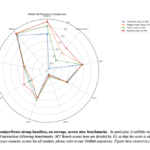The long-term cost of a home loan remains above 7%, but the trendline is moving in a positive direction for consumers and lenders even after the Federal Reserve paused its rate-cutting cycle last week.
Data at HousingWire’s Mortgage Rates Center shows that rates for 30-year conforming loans averaged 7.10% on Tuesday, down 4 basis points (bps) from a week ago and 8 bps lower than two weeks ago. Rates for 15-year conforming loans have shed 10 bps over the past two weeks and stood at 7.32% on Tuesday.
<div class=”flourish-embed flourish-chart” data-src=”visualisation/21466512?2106270″><script src=”https://public.flourish.studio/resources/embed.js“></script><noscript><img src=”https://public.flourish.studio/visualisation/21466512/thumbnail” width=”100%” alt=”chart visualization” /></noscript></div>
While last week’s decision by the Fed was expected and has brought some stability to the mortgage market in the short term, uncertainty continues to cloud the long-term forecast.
The U.S. labor market is outperforming expectations by adding hundreds of thousands of new jobs each month, but it could take a hit through President Donald Trump’s mass deportation plans. This is of particular concern to the homebuilding industry, which relies on undocumented labor for much of the construction workforce.
Inflation has declined significantly since the Fed began aggressively raising rates in 2022, but it remains above the central bank’s target of 2% annual growth. And market observers are worried that tariffs on major trade partners like Canada, Mexico and China could push the cost of goods and services higher. On Monday, Trump provided some relief by pausing tariffs on Canada and Mexico for a month after the countries agreed to bolster border security measures.
Kevin Ryan, chief financial officer at New York-based digital lender Better, said in an exclusive interview with HousingWire after last week’s Fed meeting that the “job has gotten harder” for monetary policymakers. But he remained optimistic that the mortgage lending environment will improve, even if it happens more slowly than people would like.
“I think it is highly unlikely that something happens in the macro where you don’t get another cut this year, or even worse, they have to reverse and raise,” Ryan said of the Fed. “Because I think you have a policy framework now that, despite a lot of the rhetoric, clearly wants rates to come down, and running inflation back up doesn’t comport with that.”
Matt Vernon, the head of consumer lending at Bank of America, expects the Fed’s cautious approach to continue but also noted that mortgage rates may not have to plummet for more home sales to occur in 2025. And data from Freddie Mac shows that current 30-year rates are still below the average of 7.72% dating back to 1971.
“Over the past year, homebuyer sentiment has improved despite the challenges of affordability. This could be influenced by a consistent expectation that mortgage rates will decline over time, which offers a glimmer of optimism even in the less-than-ideal market,” Vernon told HousingWire via email. “So, while 7% may not be embraced as the ideal rate, it seems to be increasingly seen as part of the ‘new normal’ that borrowers are adapting to.”
Ryan thinks that consumers — especially the ones whose wages have grown at a faster rate than inflation — are eyeing the opportunity to buy now and refinance in a year or two. But he acknowledged that others have seen their incomes eaten up by higher prices and are in a less advantageous position.
“For them, if they own a home, a HELOC is the right answer to debt consolidate, and if they don’t own a home, the timing may be a little tricky right now, Ryan said. “I look back at our customer base — it’s a little wealthier, it’s a little higher FICO (score), it skews younger — and so that cohort, we’re definitely seeing people have more positive sentiment. … ‘This is the year I’m actually going to pull the trigger and buy.’”
The Fed’s preferred gauge for inflation, the Personal Consumption Expenditures (PCE) index, rose 2.6% year over year in December. Data for January will be released at the end of this month and could provide more clarity on the direction of benchmark rates after the Fed’s next meeting in March.
Ryan said that policymakers seem more concerned about inflation today than they did back in September when they implemented a 50-bps cut — the first since the start of the COVID-19 pandemic.
“I’m not wading into politics at all, but if you get a bunch of mass deportations, you’re going to be short labor,” he said. “It’s actually going to strengthen labor even more, arguably, but it’s inflationary because now I’ve got to go find somebody who wasn’t deported to do that job, and they may already have another job.”
A labor force reduction would be harmful to efforts to grow the supply of available homes. And with many sellers choosing not to list their existing homes, prospective buyers have turned to new construction in droves.
“The new-home market is doing well right now, partly because many builders are offering rate buydowns, which lower the cost of mortgages for buyers,” Vernon said. “Mortgage lenders may have an opportunity to support buyers in this market by offering loan options that fit with these builder incentives. While it’s not clear if this trend will last, it’s something lenders might consider as a way to tap into the growing interest in new homes.”




